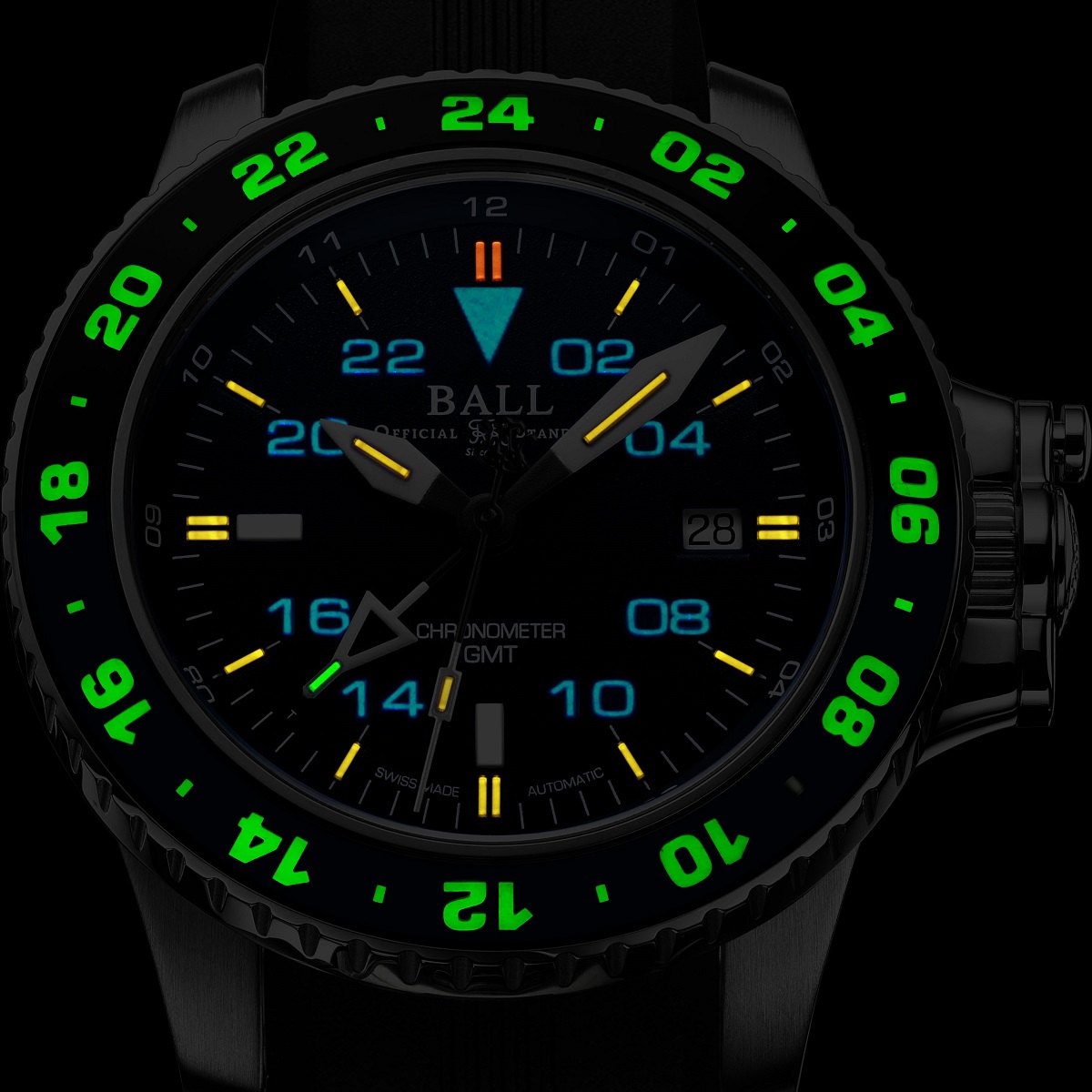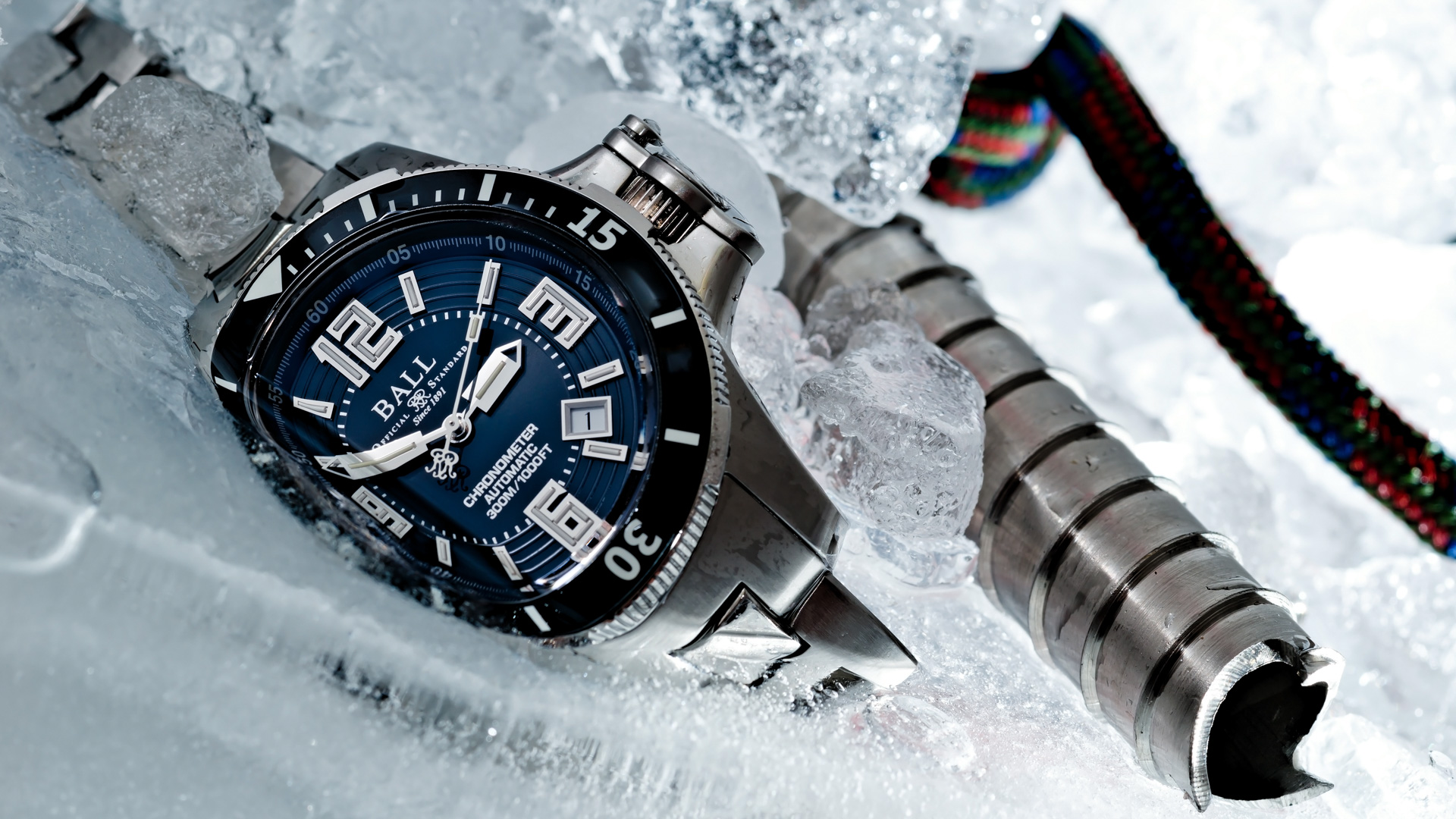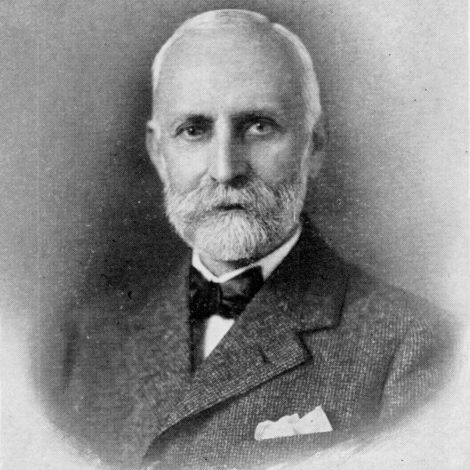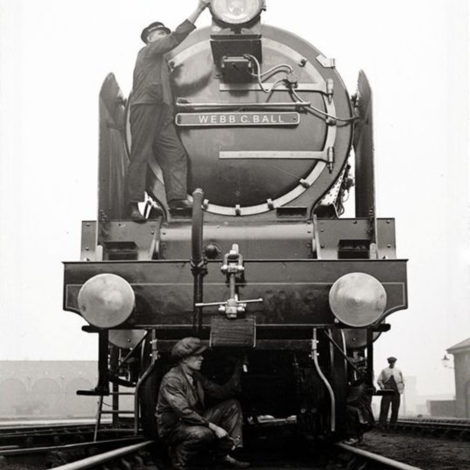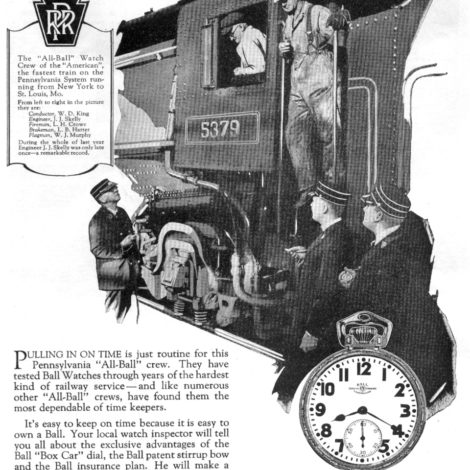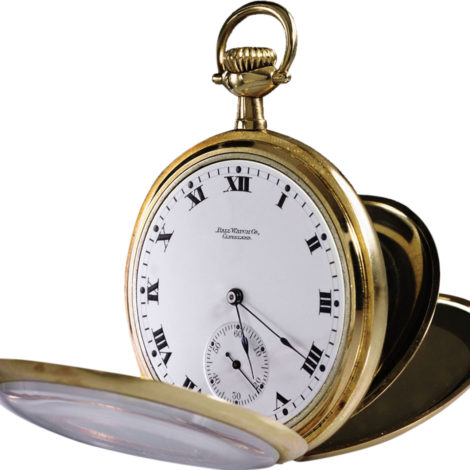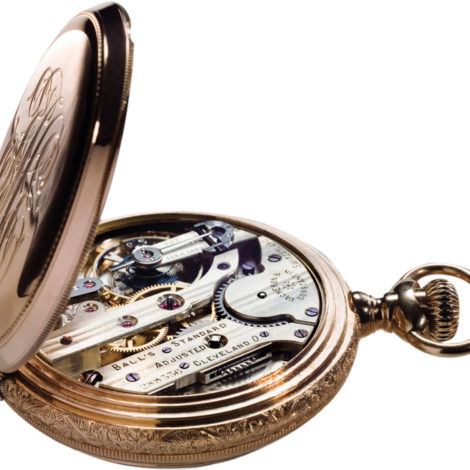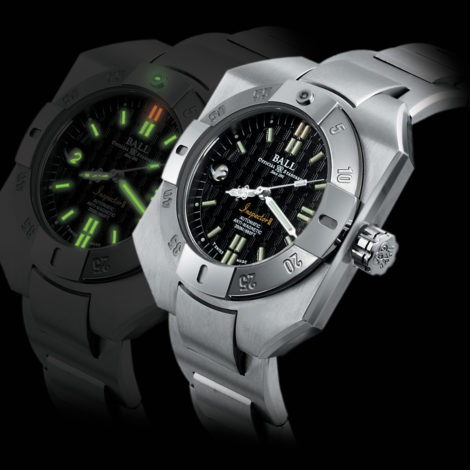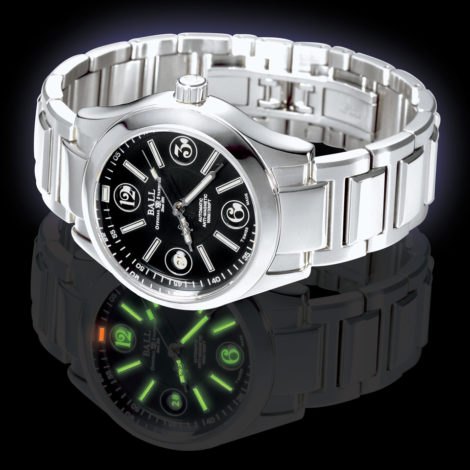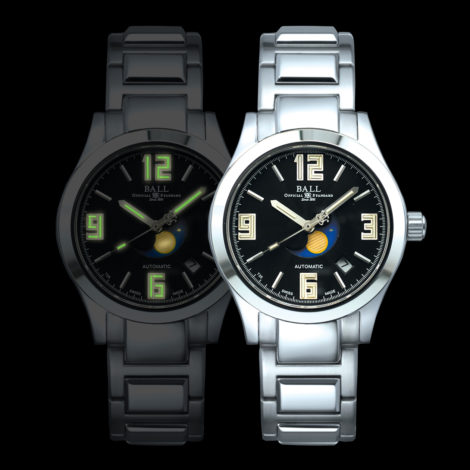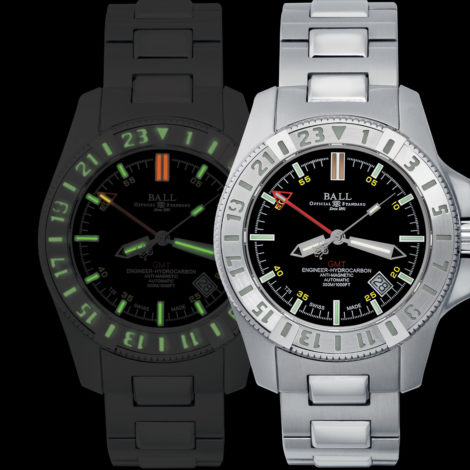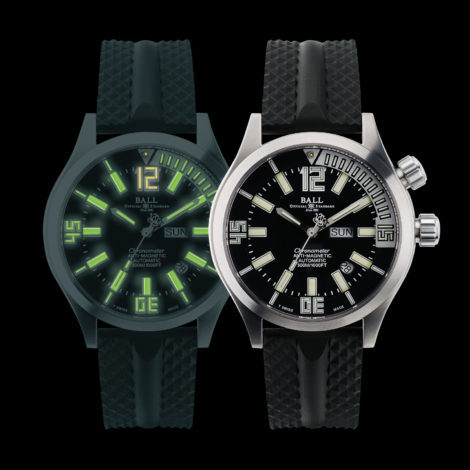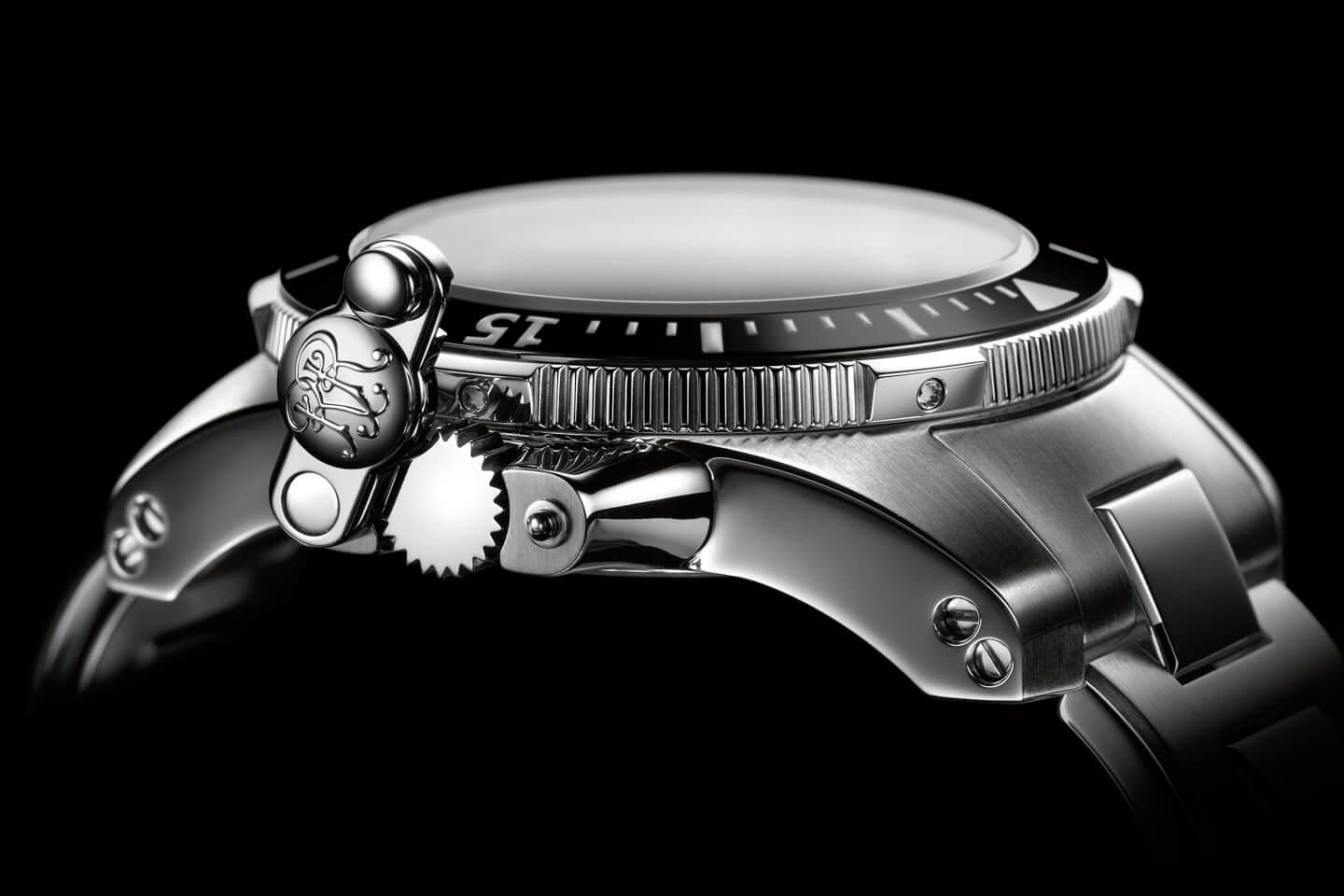 Sponsored post presented on aBlogtoWatch by advertiser
Sponsored post presented on aBlogtoWatch by advertiser
So, whatever happened to Ball Watch? Ten years ago, the Swiss brand was stoking a roaring fire with award-winning design and development talent, a rapidly growing dealer network, a highly active community fanbase on the forums, and an interesting team of ambassadors — all built around an extremely well-made product whose unique luminous capability and quality had few peers at the time. A subsequent switch to a focus on e-commerce might have put that meteoric rise on ice, but the brand recently seems to be once again finding its groove with a slew of interesting new watches, lots more activity on social media, and a resurgence in interest from the community. Longtime ABTW readers might have fond memories of the boldly sculpted Engineer Hydrocarbon or the vintage-inspired Skindiver watches, so if you’re just now being reintroduced to the brand, we thought we’d bring you up to speed on the “story so far.”
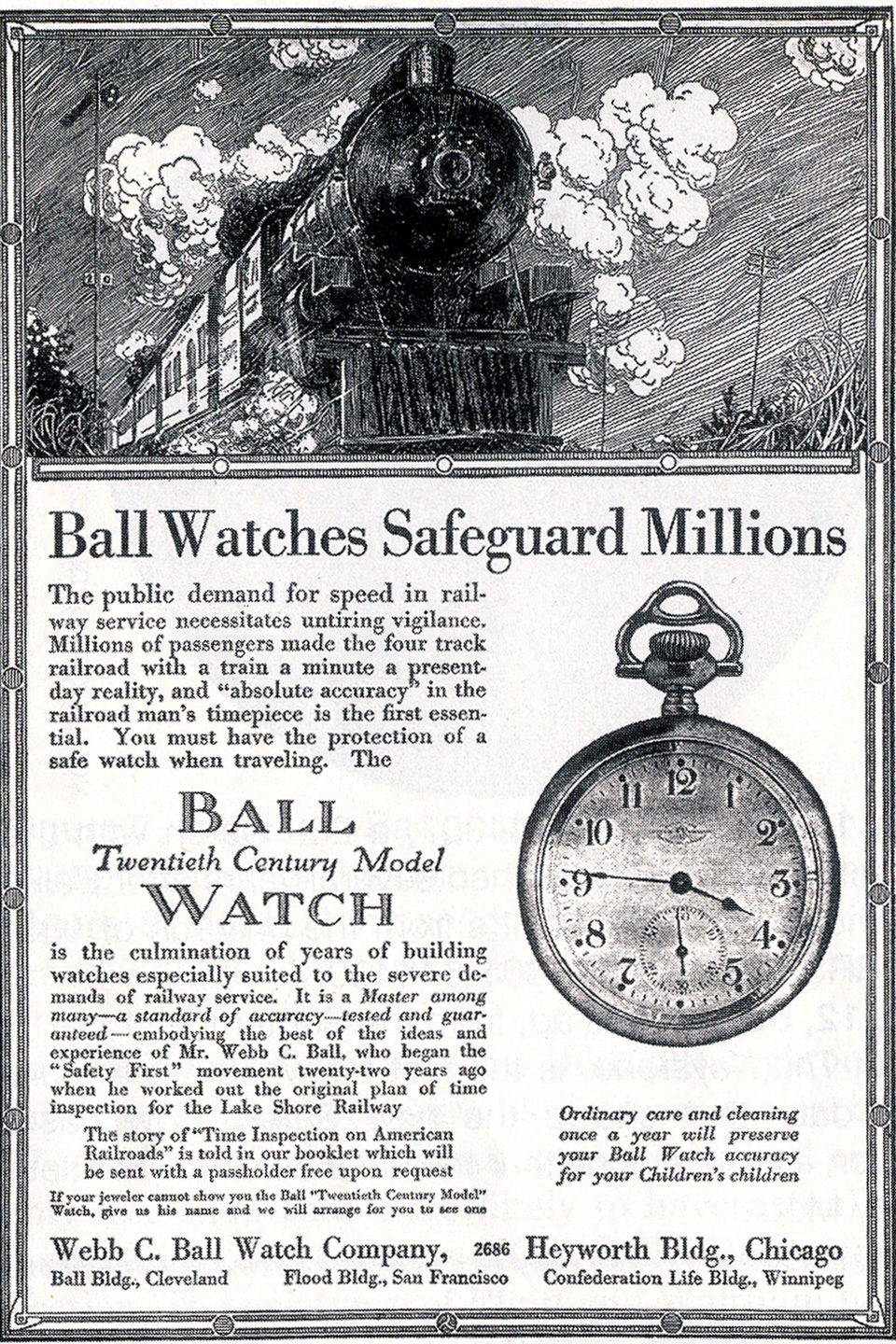 Ball’s origin story should be familiar to longtime forum regulars, but for those new here, the brand was originally born back in 1891 after the Great Kipton Train Wreck in northern Ohio, whose blame could be traced to a conductor’s watch that had stopped working. Following the accident, jeweler Webb C. Ball was appointed to investigate the cause and help develop a new set of national timekeeping regulations that would govern the performance of all watches being used in and around railroad operations. Known as “railroad time,” this new standard extended to a series of accurate and reliable watches certified by Ball that would be carried by the conductor, engineer, and firefighter of every train at the time, revolutionizing train safety and cementing the watchmaker’s legacy in horological history.
Ball’s origin story should be familiar to longtime forum regulars, but for those new here, the brand was originally born back in 1891 after the Great Kipton Train Wreck in northern Ohio, whose blame could be traced to a conductor’s watch that had stopped working. Following the accident, jeweler Webb C. Ball was appointed to investigate the cause and help develop a new set of national timekeeping regulations that would govern the performance of all watches being used in and around railroad operations. Known as “railroad time,” this new standard extended to a series of accurate and reliable watches certified by Ball that would be carried by the conductor, engineer, and firefighter of every train at the time, revolutionizing train safety and cementing the watchmaker’s legacy in horological history.
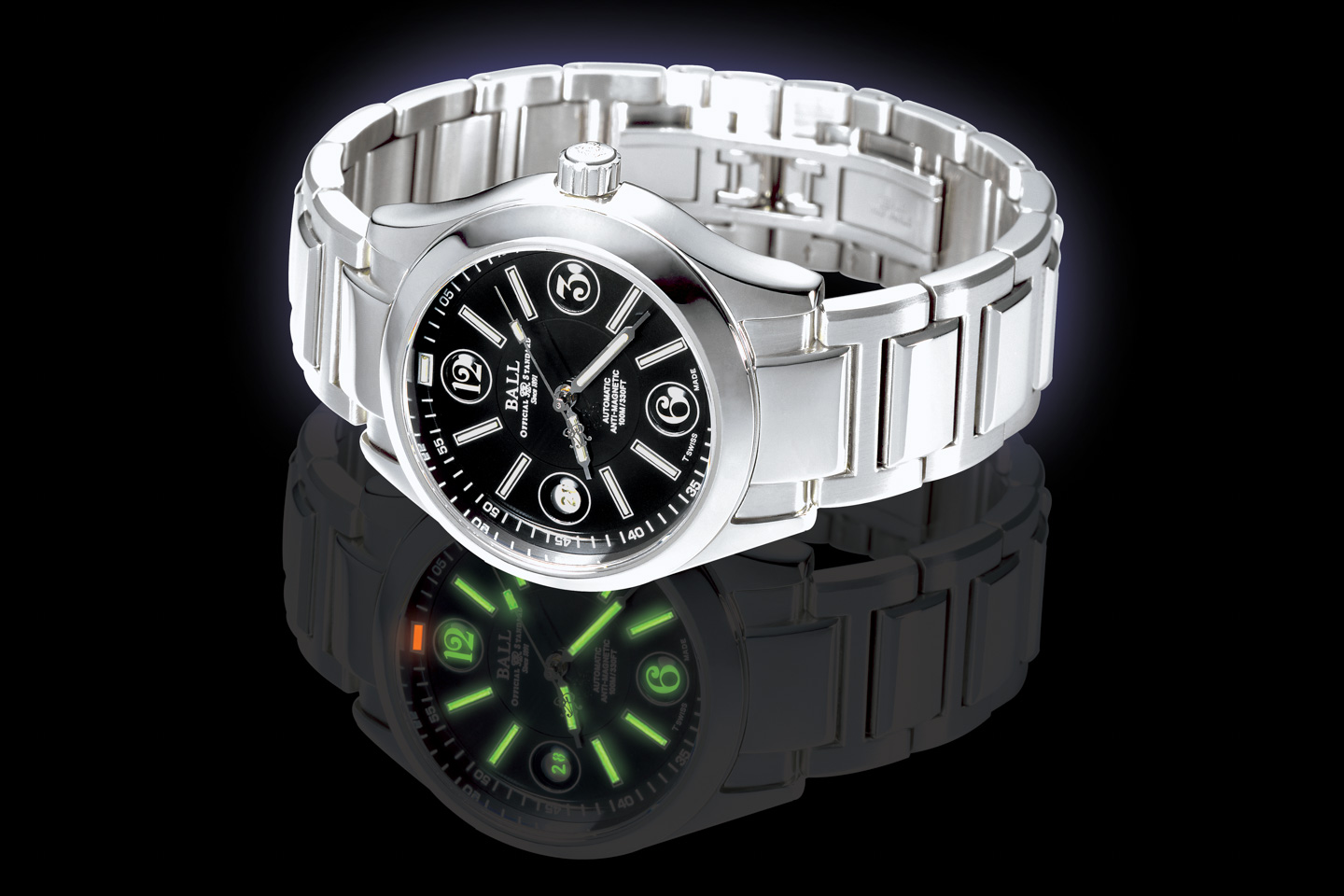 The Ball name wouldn’t always be associated with railroad time, though — particularly in the late fifties following the development of the “Underwater Society of America,” and the subsequent creation of its first purpose-built watch for sport diving: the Skindiver. The brand faded into obscurity around the quartz crisis but was revived in the early aughts using the same tenets established by Webb Ball himself: supreme accuracy and dependability in dynamic environments. However, there was a new wrinkle: The dial of every modern Ball watch would be fitted with tiny Swiss-made MB Microtec tritium gas tubes in lieu of luminous paint, yielding a constant, independent light source that didn’t need charging for up to 25 years, and an impressive degree of legibility even in total darkness. And though nearly every modern Ball watch maintains some classical railroad-themed connection, either in name or in passing reference by the signature “RR” seconds hand counterweight, the brand’s most distinctive models are a far cry from the pocket watches once carried by conductors, with their bold cases and dramatic light displays in each dial, through some very innovative and liberal applications of various shapes, sizes, and colors of tritium tubes.
The Ball name wouldn’t always be associated with railroad time, though — particularly in the late fifties following the development of the “Underwater Society of America,” and the subsequent creation of its first purpose-built watch for sport diving: the Skindiver. The brand faded into obscurity around the quartz crisis but was revived in the early aughts using the same tenets established by Webb Ball himself: supreme accuracy and dependability in dynamic environments. However, there was a new wrinkle: The dial of every modern Ball watch would be fitted with tiny Swiss-made MB Microtec tritium gas tubes in lieu of luminous paint, yielding a constant, independent light source that didn’t need charging for up to 25 years, and an impressive degree of legibility even in total darkness. And though nearly every modern Ball watch maintains some classical railroad-themed connection, either in name or in passing reference by the signature “RR” seconds hand counterweight, the brand’s most distinctive models are a far cry from the pocket watches once carried by conductors, with their bold cases and dramatic light displays in each dial, through some very innovative and liberal applications of various shapes, sizes, and colors of tritium tubes.
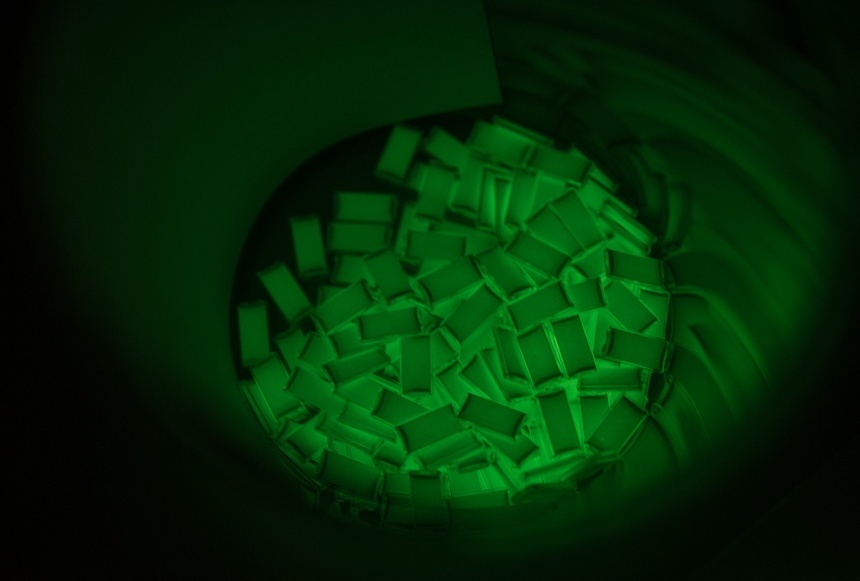 Without getting too deep into the nitty-gritty on tritium tube composition and manufacture, each tube is coated with a specially colored phosphor powder, then filled with tritium gas (a radioactive isotope of hydrogen gas), and then laser-sealed, which locks the gas inside. When the phosphor is exposed to the electrons from the tritium gas, the phosphor is excited and emits a steady, colorful light for up to 25 years. Now, most standard tritium gas tubes fitted to pistol sights or set into the dial on any garden variety “tactical-style” watch are around a half-millimeter thick, and little more than a few millimeters long.
Without getting too deep into the nitty-gritty on tritium tube composition and manufacture, each tube is coated with a specially colored phosphor powder, then filled with tritium gas (a radioactive isotope of hydrogen gas), and then laser-sealed, which locks the gas inside. When the phosphor is exposed to the electrons from the tritium gas, the phosphor is excited and emits a steady, colorful light for up to 25 years. Now, most standard tritium gas tubes fitted to pistol sights or set into the dial on any garden variety “tactical-style” watch are around a half-millimeter thick, and little more than a few millimeters long.
 Ball’s earliest references, like the Inspector II, used tubes like these, but their designs quickly evolved into much more complex and innovative light displays, from the backlit Engineer Master II Moon Glow to the Engineer Master II Moon Phase, which used vertically oriented tube clusters to form its glowing yellow moon. Some later references like the long-running Fireman Night Train opted for sheer volume — with every hand, minute, and hour marker clearly delineated by its own tiny tritium tube, yielding a light show unrivaled at the time. But multiple decades of continually improved MB Microtec tritium technology has paved the way for an entirely new range of light displays — from the wider, flatter tubes deployed in the ultra-legible Engineer Master II Diver Chronometer, or the new Engineer Hydrocarbon Original whose cleverly hidden tritium “pads” have been sandwiched beneath its dial and sapphire glass bezel for a broad, flat light display not broken up by the tubes’ edges.
Ball’s earliest references, like the Inspector II, used tubes like these, but their designs quickly evolved into much more complex and innovative light displays, from the backlit Engineer Master II Moon Glow to the Engineer Master II Moon Phase, which used vertically oriented tube clusters to form its glowing yellow moon. Some later references like the long-running Fireman Night Train opted for sheer volume — with every hand, minute, and hour marker clearly delineated by its own tiny tritium tube, yielding a light show unrivaled at the time. But multiple decades of continually improved MB Microtec tritium technology has paved the way for an entirely new range of light displays — from the wider, flatter tubes deployed in the ultra-legible Engineer Master II Diver Chronometer, or the new Engineer Hydrocarbon Original whose cleverly hidden tritium “pads” have been sandwiched beneath its dial and sapphire glass bezel for a broad, flat light display not broken up by the tubes’ edges.
 For many brands, a unique case or crown protection device and a distinctive light display might be enough of a calling card, but Ball has also spent considerable time and resources innovating on the technology inside its watches to ensure they are every bit as capable and worthy of the harsh environments in which they are designed to thrive. From an innovative folding buckle on its bracelets to a distinct crown-protection system that houses its own integrated helium release valve, in addition to the aforementioned movement innovations, Ball currently has over 30 patents to its name and seems to be showing no signs of slowing. But the first of these modern innovations was rolled out in 2013 with SpringLOCK, a proprietary hairspring cage designed to protect the movement’s most sensitive component from repetitive shocks that could impact chronometry. SpringLOCK was soon joined by two more movement patents: SpringSEAL and A-PROOF — a more impact-resistant regulator assembly, and a wildly innovative mu-metal diaphragm mechanism designed to shield the movement from magnetic fields at the twist of a bezel. Ball would also finally release its first fully in-house-manufactured calibre 7309 with an 80-hour power reserve in late 2017, laying the foundation for an entirely new line of complications — an achievement that Ball Watch CEO Kevin Kouch calls his proudest moment with the brand.
For many brands, a unique case or crown protection device and a distinctive light display might be enough of a calling card, but Ball has also spent considerable time and resources innovating on the technology inside its watches to ensure they are every bit as capable and worthy of the harsh environments in which they are designed to thrive. From an innovative folding buckle on its bracelets to a distinct crown-protection system that houses its own integrated helium release valve, in addition to the aforementioned movement innovations, Ball currently has over 30 patents to its name and seems to be showing no signs of slowing. But the first of these modern innovations was rolled out in 2013 with SpringLOCK, a proprietary hairspring cage designed to protect the movement’s most sensitive component from repetitive shocks that could impact chronometry. SpringLOCK was soon joined by two more movement patents: SpringSEAL and A-PROOF — a more impact-resistant regulator assembly, and a wildly innovative mu-metal diaphragm mechanism designed to shield the movement from magnetic fields at the twist of a bezel. Ball would also finally release its first fully in-house-manufactured calibre 7309 with an 80-hour power reserve in late 2017, laying the foundation for an entirely new line of complications — an achievement that Ball Watch CEO Kevin Kouch calls his proudest moment with the brand.
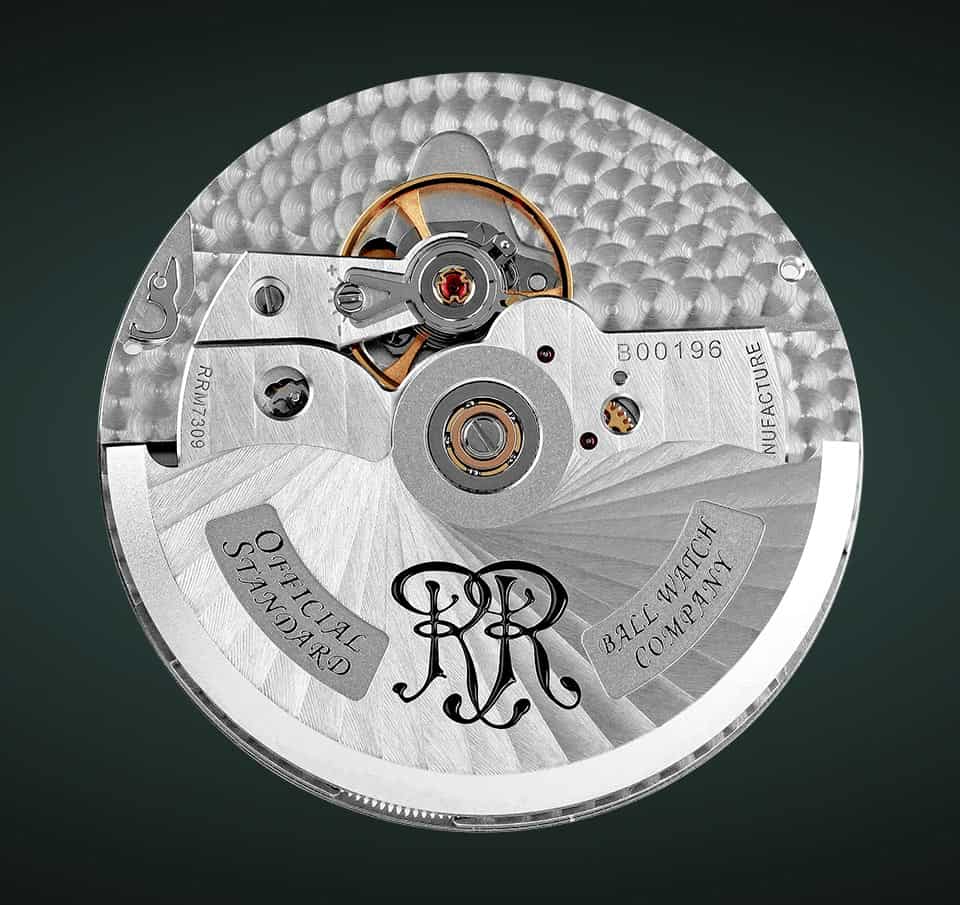 Ball’s innovation isn’t just with its physical product, though. A lesser-known fact about the brand is that it has always maintained a keen eye for ambassador talent in unique spaces and once cultivated partnerships and built unique watches for two very key individuals well before each became much more famous in their respective fields: Free-climbing superstar Alex Honnold who would later summit El Capitan without ropes and star in the Oscar-winning documentary Free Solo by Jimmy Chin, and renowned world champion freediver and filmmaker Guillaume Néry, who is now making plenty of waves of his own with Panerai. It’s difficult to gauge from Ball’s current crop of “Explorer’s Club” members who might be the next Honnold or Nery in terms of notoriety, but as always, there’s no shortage of interesting personalities in the outdoor/adventure space wearing Ball Watches while in the pursuit of the extraordinary.
Ball’s innovation isn’t just with its physical product, though. A lesser-known fact about the brand is that it has always maintained a keen eye for ambassador talent in unique spaces and once cultivated partnerships and built unique watches for two very key individuals well before each became much more famous in their respective fields: Free-climbing superstar Alex Honnold who would later summit El Capitan without ropes and star in the Oscar-winning documentary Free Solo by Jimmy Chin, and renowned world champion freediver and filmmaker Guillaume Néry, who is now making plenty of waves of his own with Panerai. It’s difficult to gauge from Ball’s current crop of “Explorer’s Club” members who might be the next Honnold or Nery in terms of notoriety, but as always, there’s no shortage of interesting personalities in the outdoor/adventure space wearing Ball Watches while in the pursuit of the extraordinary.

The Engineer Master II Diver Worldtime was designed with world champion freediver Guillaume Nery in mind
That eye for partnerships has yielded a wide range of interesting licensed references, as well – particularly with military units like the Army’s Green Berets, the U.S. Coast Guard, and the Navy’s Experimental Diving Unit (just to name a few), all of which tend to suit the rugged and masculine traits of the watches themselves. Though highly varied and usually punctuated by a single reference, there is one notable exception: the ongoing Ball Watches x Ducks Unlimited partnership, which is due for a new release later this year, to benefit the conservation of hunting wetlands throughout the United States.
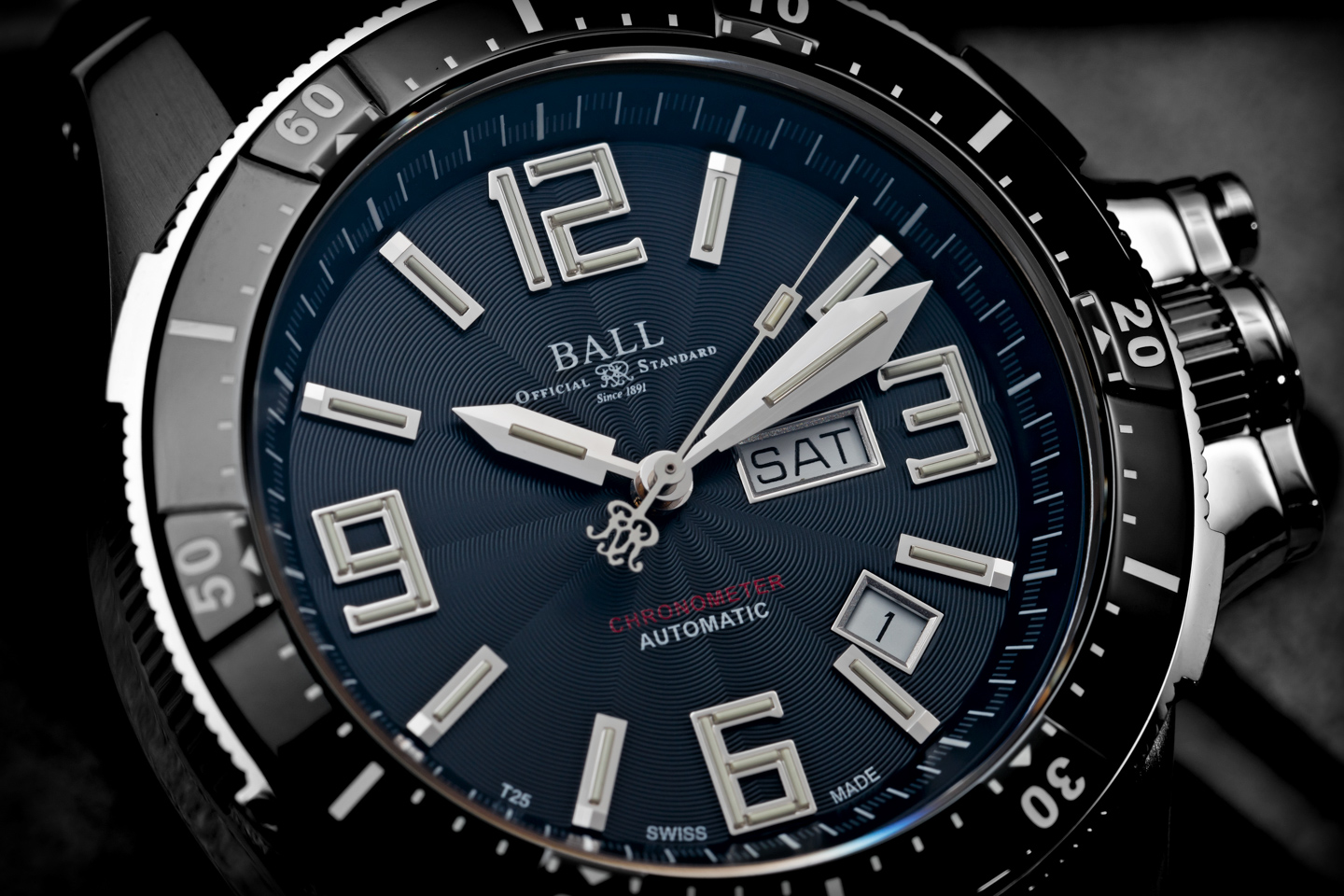 One major difference between the Ball Watches from the early forum days and the Ball Watch of 2020 is a striking difference in price — to the direct benefit of the watch collector. While the Ball of yesteryear was beholden to the traditional margins required to maintain an active network of brick-and-mortar retailers, the modern physical Ball watch is impressively more refined than ever, but thanks to an e-commerce driven pre-order model that retails directly to collectors, the brand remains agile and able to focus on new models and innovations without inflating its prices. So, if you haven’t checked in with the brand in a while (maybe the Night Train DLC was the best and brightest Ball Watch last time you tuned in?), it’s safe to say Ball is back to its winning ways and producing some of its best work right now. Oh, and for those keeping score at home, that “lume crown” now belongs to the new Engineer Hydrocarbon Aero GMT II.
One major difference between the Ball Watches from the early forum days and the Ball Watch of 2020 is a striking difference in price — to the direct benefit of the watch collector. While the Ball of yesteryear was beholden to the traditional margins required to maintain an active network of brick-and-mortar retailers, the modern physical Ball watch is impressively more refined than ever, but thanks to an e-commerce driven pre-order model that retails directly to collectors, the brand remains agile and able to focus on new models and innovations without inflating its prices. So, if you haven’t checked in with the brand in a while (maybe the Night Train DLC was the best and brightest Ball Watch last time you tuned in?), it’s safe to say Ball is back to its winning ways and producing some of its best work right now. Oh, and for those keeping score at home, that “lume crown” now belongs to the new Engineer Hydrocarbon Aero GMT II.
For more information on the current Ball Watch collection, visit ballwatch.ch.
Sponsored Posts are a form of advertising that allows sponsors to share useful news, messages, and offers to aBlogtoWatch readers in a way traditional display advertising is often not best suited to. All Sponsored Posts are subject to editorial guidelines with the intent that they offer readers useful news, promotions, or stories. The viewpoints and opinions expressed in Sponsored Posts are those of the advertiser and not necessarily those of aBlogtoWatch or its writers.
